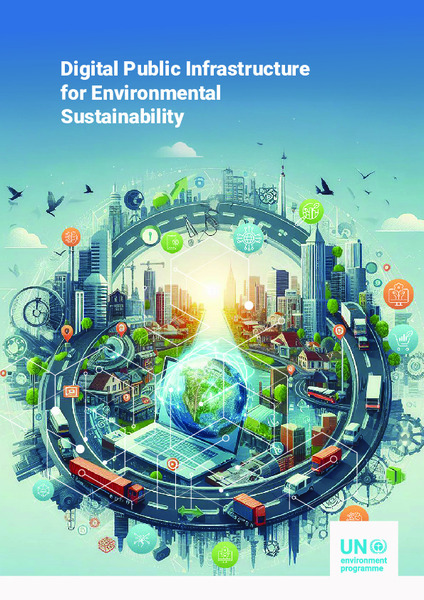Digital Public Infrastructure for Environmental Sustainability

Date
2024-03Author
United Nations Environment Programme
Citation Tool
Bibliographic Managers
RT Generic T1 Digital Public Infrastructure for Environmental Sustainability A1 United Nations Environment Programme YR 2024-03 LK https://wedocs.unep.org/20.500.11822/45181 PB United Nations Environment Programme AB TY - GEN T1 - Digital Public Infrastructure for Environmental Sustainability AU - United Nations Environment Programme Y1 - 2024-03 UR - https://wedocs.unep.org/20.500.11822/45181 PB - United Nations Environment Programme AB - @misc{20.500.11822_45181 author = {United Nations Environment Programme}, title = {Digital Public Infrastructure for Environmental Sustainability}, year = {2024-03}, abstract = {}, url = {https://wedocs.unep.org/20.500.11822/45181} } @misc{20.500.11822_45181 author = {United Nations Environment Programme}, title = {Digital Public Infrastructure for Environmental Sustainability}, year = {2024-03}, abstract = {}, url = {https://wedocs.unep.org/20.500.11822/45181} } TY - GEN T1 - Digital Public Infrastructure for Environmental Sustainability AU - United Nations Environment Programme UR - https://wedocs.unep.org/20.500.11822/45181 PB - United Nations Environment Programme AB -View/Open
Item Statistics
Display item statisticsMetadata
Show full item recordDescription
The report examines common information challenges stakeholders face when making decisions related to environmental sustainability and explores the role that Digital Public Infrastructure (DPI) can play as a key part of the solution.
To tackle the interconnected triple environmental planetary crises, it is critical to have accessible, timely, credible, and insightful information that can support environmental sustainability decision-making. Developing interconnected data exchange mechanisms has become a necessity, but sole reliance on private solutions will likely fail to comprehensively address the challenges and may result in further data fragmentation. A blend of private and public solutions is essential. However, there is currently a notable gap in DPI to facilitate the flow of environmental sustainability information to different stakeholders.
This report analyses three cases related to the agri-food sector and identifies six categories of technology innovations (TIs) that could help tackle information challenges:
• Open data discovery for environmental sustainability
• Privacy enhancing technologies to enable flow of environmental sustainability information
• Data markets for environmental sustainability-related data
• Computational law and data integration of green and circular economy policy measures
• Using Large Language Models to ‘speak’ with green and circular economy policy
• Tools and techniques for human-centred artificial intelligence in environmental sustainability decision-making
Collections
Document Viewer
To read more, scroll down below.

